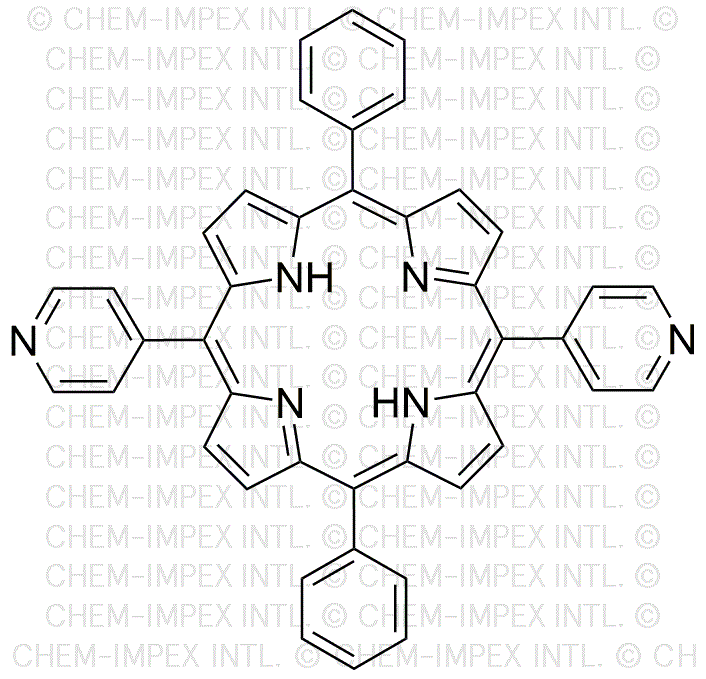5,15-(Diphenyl)-10,20-(di-4-pyridyl)porphyrin is widely utilized in research focused on:
- Photodynamic Therapy: This compound is effective in treating certain cancers by generating reactive oxygen species when exposed to light, making it a valuable agent in targeted cancer treatments.
- Solar Energy Conversion: Its unique structure allows it to absorb light efficiently, making it a promising candidate for use in solar cells, enhancing energy conversion efficiency.
- Sensor Development: The chemical's properties enable it to act as a sensor for detecting metal ions or environmental pollutants, aiding in environmental monitoring and safety applications.
- Biological Imaging: It can be used as a contrast agent in imaging techniques, helping researchers visualize cellular processes and disease progression in real-time.
- Catalysis: This compound serves as a catalyst in various chemical reactions, improving reaction rates and selectivity, which is beneficial in pharmaceutical synthesis and industrial processes.
General Information
Properties
Safety and Regulations
Applications
5,15-(Diphenyl)-10,20-(di-4-pyridyl)porphyrin is widely utilized in research focused on:
- Photodynamic Therapy: This compound is effective in treating certain cancers by generating reactive oxygen species when exposed to light, making it a valuable agent in targeted cancer treatments.
- Solar Energy Conversion: Its unique structure allows it to absorb light efficiently, making it a promising candidate for use in solar cells, enhancing energy conversion efficiency.
- Sensor Development: The chemical's properties enable it to act as a sensor for detecting metal ions or environmental pollutants, aiding in environmental monitoring and safety applications.
- Biological Imaging: It can be used as a contrast agent in imaging techniques, helping researchers visualize cellular processes and disease progression in real-time.
- Catalysis: This compound serves as a catalyst in various chemical reactions, improving reaction rates and selectivity, which is beneficial in pharmaceutical synthesis and industrial processes.
Documents
Safety Data Sheets (SDS)
The SDS provides comprehensive safety information on handling, storage, and disposal of the product.
Product Specification (PS)
The PS provides a comprehensive breakdown of the product’s properties, including chemical composition, physical state, purity, and storage requirements. It also details acceptable quality ranges and the product's intended applications.
Certificates of Analysis (COA)
Search for Certificates of Analysis (COA) by entering the products Lot Number. Lot and Batch Numbers can be found on a product’s label following the words ‘Lot’ or ‘Batch’.
*Catalog Number
*Lot Number
Certificates Of Origin (COO)
This COO confirms the country where the product was manufactured, and also details the materials and components used in it and whether it is derived from natural, synthetic, or other specific sources. This certificate may be required for customs, trade, and regulatory compliance.
*Catalog Number
*Lot Number
Safety Data Sheets (SDS)
The SDS provides comprehensive safety information on handling, storage, and disposal of the product.
DownloadProduct Specification (PS)
The PS provides a comprehensive breakdown of the product’s properties, including chemical composition, physical state, purity, and storage requirements. It also details acceptable quality ranges and the product's intended applications.
DownloadCertificates of Analysis (COA)
Search for Certificates of Analysis (COA) by entering the products Lot Number. Lot and Batch Numbers can be found on a product’s label following the words ‘Lot’ or ‘Batch’.
*Catalog Number
*Lot Number
Certificates Of Origin (COO)
This COO confirms the country where the product was manufactured, and also details the materials and components used in it and whether it is derived from natural, synthetic, or other specific sources. This certificate may be required for customs, trade, and regulatory compliance.


